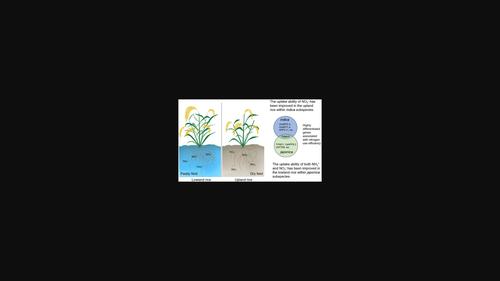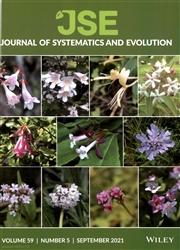Independent genetic differentiation between upland and lowland rice ecotypes within japonica and indica subspecies during their adaptations to different soil-nitrogen conditions
IF 2.9
1区 生物学
Q1 Agricultural and Biological Sciences
引用次数: 0
Abstract
The soil-nitrogen condition, which differs greatly between paddy fields (mainly in the form of ammonium, NH4+) and dry fields (mainly in the form of nitrate, NO3−), is a main environmental factor that drives the adaptive differentiation between upland and lowland rice ecotypes. However, the adaptive differentiation in terms of the nitrogen use efficiency (NUE) between upland and lowland rice has not been well addressed. In this study, we evaluated NUE-related traits among rice landraces as well as the genetic differentiation between NUE-associated genes and quantitative trait loci (QTLs). The japonica upland and lowland rice ecotypes showed large differences in their NUE-related traits such as the absorption ability for NH4+ and NO3−. The indica upland and lowland rice exhibited similar performances when cultivated in solutions containing NH4+ or NO3− or when planted in paddy or dry fields. However, the indica upland rice possessed a greater ability to absorb NO3−. We identified 76 QTLs for 25 measured traits using genome-wide association analysis. The highly differentiated NUE-associated genes or QTLs between ecotypes were rarely shared by japonica and indica subspecies, indicating an independent genetic basis for their soil-nitrogen adaptations. We suggested four genes in three QTLs as the candidates contributing to rice NUE during the ecotypic differentiation. In summary, the soil-nitrogen condition drives the adaptive differentiation of NUE between upland and lowland rice independently within the japonica and indica subspecies. These findings can strengthen our understanding of rice adaptation to divergent soil-nitrogen conditions and have implications for the improvement of NUE.

粳稻和籼稻亚种中高地和低地水稻生态型在适应不同土壤氮条件过程中的独立遗传分化
水田(主要以铵态氮(NH4+)的形式存在)和旱田(主要以硝态氮(NO3-)的形式存在)之间的土壤氮状况差异很大,这是导致高地和低地水稻生态型之间适应性分化的主要环境因素。然而,高地水稻和低地水稻在氮利用效率(NUE)方面的适应性分化还没有得到很好的研究。在本研究中,我们评估了水稻陆稻品种间氮利用效率相关性状以及氮利用效率相关基因和数量性状位点(QTLs)之间的遗传分化。粳型高地和低地水稻生态型在 NUE 相关性状(如对 NH4+ 和 NO3- 的吸收能力)上表现出很大差异。在含有 NH4+ 或 NO3- 的溶液中栽培或在水田或旱田种植时,籼型陆稻和低地水稻表现出相似的性能。然而,高地籼稻吸收 NO3- 的能力更强。通过全基因组关联分析,我们确定了 25 个测量性状的 76 个 QTLs。粳稻和籼稻亚种很少共享生态型之间高度分化的氮素吸收相关基因或 QTLs,这表明它们对土壤氮素的适应具有独立的遗传基础。我们认为在生态型分化过程中,3个QTL中的4个基因可能对水稻的氮素利用效率有贡献。综上所述,在粳稻和籼稻亚种中,土壤氮素条件独立驱动了高地和低地水稻NUE的适应性分化。这些发现可以加强我们对水稻适应不同土壤氮素条件的理解,并对提高水稻的NUE有一定的意义。
本文章由计算机程序翻译,如有差异,请以英文原文为准。
求助全文
约1分钟内获得全文
求助全文
来源期刊

Journal of Systematics and Evolution
Agricultural and Biological Sciences-Ecology, Evolution, Behavior and Systematics
CiteScore
7.40
自引率
8.10%
发文量
1368
审稿时长
6-12 weeks
期刊介绍:
Journal of Systematics and Evolution (JSE, since 2008; formerly Acta Phytotaxonomica Sinica) is a plant-based international journal newly dedicated to the description and understanding of the biological diversity. It covers: description of new taxa, monographic revision, phylogenetics, molecular evolution and genome evolution, evolutionary developmental biology, evolutionary ecology, population biology, conservation biology, biogeography, paleobiology, evolutionary theories, and related subjects.
 求助内容:
求助内容: 应助结果提醒方式:
应助结果提醒方式:


